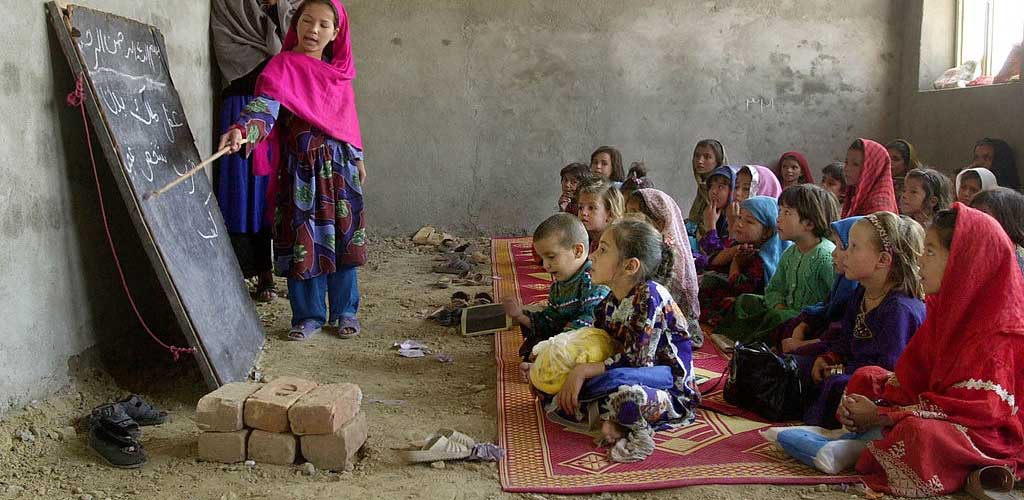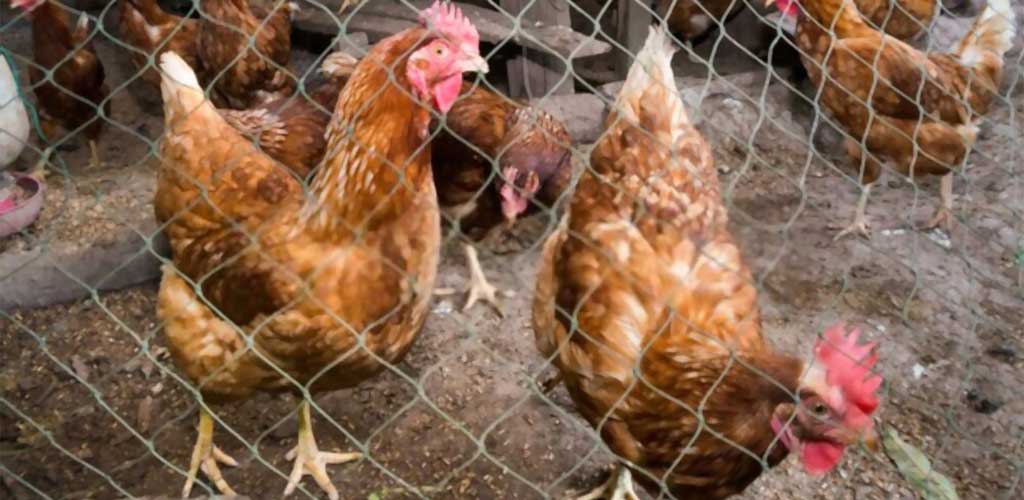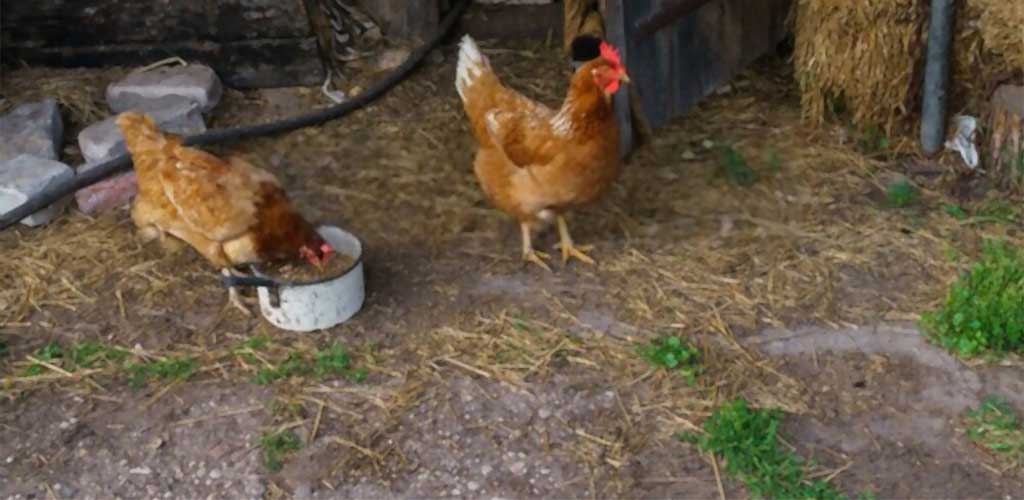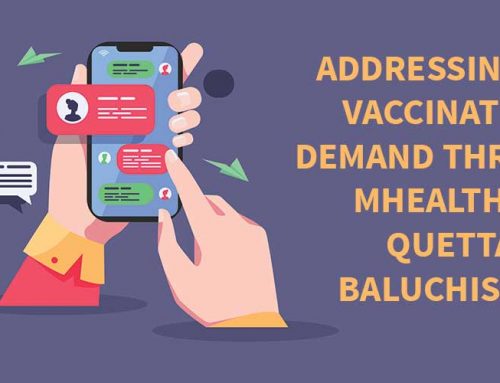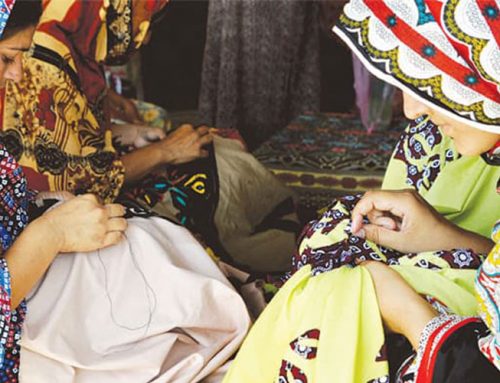Project Description
Since 1986, Mercy Corps is working in Baluchistan province. The organization has been actively engaged to support Afghan refugees, from last 25 years. Healthcare, economic empowerment, building capacity and resilience into the effected communities are the core themes of Mercy Corps’ work, therefore, a 3 years Program named as “Integrated Afghan Refugees Assistance Program (IARAP)”, was rolled out through the support of PRM, to serve the Afghan refugees community in the surrounding of Quetta.
The Program frame work is based on four key interventions which include health services and training of community midwives to enhance the primary health coverage and community outreach, vocational training of unskilled human resource, support for household level income through poultry birds, developing entrepreneurs and women business incubation. The Program was implemented with the collaboration of Department of Health Baluchistan, Technical Training Center and Women Technical Center.
Keeping in view the overall IARAP Program nature of interventions within the total span of 3 years of this progressive IARAP, form 2013 to 2016, a comprehensive evaluation of IARAP Program was planned. The key objectives of this evaluation are mentioned below:
- To assess the overall effectiveness of the IARAP Program, in terms of achievements against the Program objectives across all the indicators.
- To provide the evidence on the strengths and weaknesses of the IARAP Program, in order to devise the recommendations to foster further improvements in the Program, while documenting the lessons learnt across all the Program interventions and management practices.
This evaluation was conducted by Momentum Ventures Pvt Ltd in August 2016 with the support and facilitation of Mercy Corps field teams. A team of experts which include health adviser and business and entrepreneurship adviser had worked to explore the Program by using qualitative and quantitative tools. The evaluation team had utilized both primary and secondary data sources to extract the relevant information about the program.
Health Interventions
As far MNCH indicators related to Afghan refugees are concerned, maternal deaths account for a substantial burden of mortality among Afghan refugee women of reproductive age in Pakistan. Hence, IARAP Program component of health services provision through establishment of family health centers and birthing stations at BHUs, training of CMWs, training of doctors and paramedics for provision of health services to Afghan refugee population, is highly relevant with in the overall background and context of the mother & child health scenario prevailing with in the Afghan refugees and their host community population.
Provision of basic health services to the Afghan refugees & host communities, through Family Health Centers & BHUs have been quite effective, targets related to this Program objective are on track by & large. A number of indicators like ANC, PNC and delivery by skilled birth attendant have shown a statistically significant improvement at the end of Program. The Program design element related to support of the Afghan refugees for voluntary repatriation have all been handled effectively, as determined by the Program quantitative data, as 56% of CMWs have successfully repatriated.
According to the primary data collected from the CMWs, 100% of the interviewed CMWs have termed their CMW training as very effective and revealed that their skill is highly relevant w-r-t the demand in their home country. However the aspect of supportive supervision to establish the community linkages by Mercy Corp staff was gauged as a weaker aspect by the Program beneficiary.
CMWs related Program intervention has been termed as “highly sustainable” by all the respondents. The core reason for sustainability of CMWs workstations is the duration of their certification, which has been endorsed by Afghanistan’s Ministry of Public Health. Hence their qualification backed up by a certificate here in Pakistan is equally acceptable at Afghanistan. Current repatriation trend (as 58% CMWs repatriated successfully) is also indicative of the fact that their skill is sustainable in terms of providing them with an opportunity to earn their living and at the same time ensuring support to community health related to MCH matters. The rest of the CMW are also utilizing their skills to reach out to local community with in their immediate surrounding community.
Poultry
Looking up at the achievement of the indicators related to poultry beneficiaries of IARAP Program, it’s quite obvious that the Program has been able to achieve its targets related to number of beneficiaries to be maintained over the three years & fulfillment of capacity development requirements to help the beneficiaries successfully raise their poultry birds. All of the poultry beneficiaries (i.e. 100%) interviewed through FGDs (90) have explained that they have been receiving orientation through Female Livestock Extension Workers (FLEWs). All the beneficiaries reported that they have received utensils, medicine and feed during the period of intervention. However, the sustainability factor of the intervention is quite weak, based upon the fact that income increase is “on-target” yet non-significant. Poultry flocks are vulnerable to life loss as well and there is no mechanism of replacement of the birds at Mercy Corps level.
Vocational Trainings
A structured engagement of the Program with government run Technical Training Centers (TTCs) and Women’s Technical Training Centers (WTTCs) has played a pivotal role in delivering the targets related to this component. Market-based vocational trade selection & selections of trainees (through technical skills introduction based engagement at community level to interviewing & finalizing the potential candidates at the TTC) have been very effective strategies to recruit the vulnerable youth among the Afghan refugees and their host communities as per targets of 125 male and 125 female graduates per year, which were achieved at 97% and 98% respectively.
Over all training has been rated as “Very Effective” by the trainees, with a small (3% of male graduates & 9% of female graduates) who have termed the effectiveness of training as “good”.
With regards to the effectiveness of training, graduates, male and female, have an employment percentage of 74% & 76% respectively out of total graduated during year 2016. Of these graduates majority is engaged with the other employers on a full time basis as they work for a day long. This is a healthy trend and indicates quite a significant contribution of vocational training activity to ensure employment & a sustainable source of income. Certainly, elements including market demand based course conductions, provision of tool kits, mentoring support, a well knitted market linkages development activity across the course, internships etc are all the enabling factors, which have contributed to such a tremendous rate of employment.
Certain elements of this intervention like e.g. duration of courses as per NAVTTEC curriculum needs to be re-evaluated.
Entrepreneurship
Targeted support for entrepreneurs has been an effective intervention in terms of employment generation and utilization of technical skills acquired through vocational trainings. During the survey it was revealed that entrepreneurship group model had not been very successful. Mentoring support provides an advice on the matters related to knowledge of the respective trade and help in establishing linkages are the valid and efficient inputs as well. However financial constraints have been of prime consideration by the entrepreneurs, which mentoring support alone has not been able to address. The ability of entrepreneurs to absorb local community members as their “employees” has been determined as very weak based upon the fact that financial in-capability of entrepreneurs’ don’t allow them to absorb the employees on permanent basis. In case of entrepreneurs sample group (where an employee has been taken on board), the employee doesn’t meet the age criteria as ratified by ILO.
All of the entrepreneurs have viewed their ventures’ sustainability as “Good”. The data triangulated with the response on sustainability factor that was gathered through in depth interviews from IARAP staff, it was revealed that entrepreneurs are successful yet sustainable as well, keeping in view the level of earning that they have maintained across last 6 months. 33% of entrepreneurs (interviewed) earn PKR 8,000 a month (grossly) on an average from last 6 months. 22% earn PKR 10,000 per month (grossly), another 22% earn up to PKR 12,000 (grossly) per month and 22% have an earning level of closer to 30,000 PKR (grossly) on average monthly basis. Along with this total revenue level, the entrepreneurs have a tendency of reinvesting in their business. 37% of entrepreneurs have reinvested about 20% to 25% of their net income in their business and 67% maintained that they re-invest about 50% of their net income in their ventures. The balance of the gross earning is being spent on operational business expenses and catering to the family expenditures.
Women Business Incubation (WBI)
WBI, being the most recent roll out under IARAP do not provide much of the evidence about its efficiency and effectiveness. The survey finding reveals that WBIs have been very effective opportunity to establish the linkages in the market & provision of supplies and materials on site. However they have not been provided with the capacity development track which is essential for establishing such incubates. Roll out timings of the WBI intervention are a point of concern as the intervention has been rolled out very late during the last year of the program.
According to the WBI beneficiaries their business is sustainable due to the fact that their market linkages are being established and their sales revenue is also picking up. However it is a new intervention and it is quite difficult to comment (at this point to comment) on the sustainability of this intervention. WBI beneficiaries need to get capacitated through a concentrated training program related to “Incubation Best Practices” and process and technical guidelines should be developed for the incubates, so that they acquire desired process knowledge through which they could be able to cement their practices.
Recommendations
It is clearly reflected from the results section that program has achieved the maximum results over and span of three year of implementation. However some of areas of improvements are still identified during the qualitative and quantitative data analysis.
1-The community midwives were selected from the local community and were trained by the government institute. The training program of CMW was designed for a period of 18 months. After the training these CMW were supposed to work with in communities from where they were selected. During the evaluation it was highlighted that the CMW had weaker networking for referral of patients to secondary level health care facility. Overall a networking and social mobilization technique of CMW needs an improvement.
2-During the FGDs it was revealed that medicine supplies were not adequate at the BHU, which can potentially result in lower accessibility of community in the future. It is recommended to establish a mechanism that ensures on-going monitoring of medicine and supplies at BHU level so that un-interrupted patient care can be assured.
3- In qualitative data it was revealed the CMWs were not able to satisfy the evaluator about their roles and services for the community. Along with this the CMW highlighted that there is a need for refresher training to further enhance their skills and confidence to provide the services to the community.
4-The beneficiaries of poultry interventions were provided with the layer breeds and each household was provided with 10 birds. In the qualitative data it was found that there is a need to include the breeder in the flock as this 10 bird flock cannot be expanded without this. To keep the business running there is a need to increase the size of flock and addition of the breeder birds should also be ensured.
5-The income generated through poultry intervention was quite low there is a need to prepare a business plan and chalk out the real time expected income generation, along with expansion plan of poultry business.
6- The duration of coursework has been a point of concern by the TTC & WTTC authorities and they are of the opinion that NAVTTEC curriculum based duration should be followed for every course as it will enhance learning and will multiply the market standing of the graduated males & females. Hence it is recommended to include the standard training duration and the curriculum for vocational training.
7-Business plans (which have been reviewed for the entrepreneur groups) suggest that business plan mentions revenue, expenses, client acquisition sources etc. However the narrative part in the business plan related to market sizing, action plans to utilize the contact for business development and role & responsibilities of partners are totally missing and there is a need for a strengthened process for more comprehensive business plan development.
8- The entrepreneurs (male and female, working as electricians, mobile repair services, and beauticians) have mentioned that they are actually able to generate the income but had also faced financial constraints to maintain and grow the business. This reflects comparatively very limited financial solutions were available. Other financing options like microfinance were apparently not provided or were not accessible to these entrepreneurs. Considering the legality status of refugees and their doubtful eligibility to get loans from banks the options for social collateral based revolving funds can be a workable option for the group based entrepreneurs.
9-The entrepreneurs groups were formed for effective networking, but the overall program approach to supervise these groups and ensure that these groups are able to develop effective networking is quite weak, there is need to establish a mechanism where these groups could have performed well to establish the enterprise. In this scenario, a social mobilization strategy/action plan should be followed that can lead to a group formation through pool up of the social collaterals.
10- Job creation by the entrepreneurs has not been very encouraging. 90% of male entrepreneurs have been able to hire only one employee from their local community. However, in this particular case it does not fulfill the ILO criteria of age for employability. There is a need to add the CODE of CONDUCT for the employee in the training program of the entire cadre. Jobs created by the entrepreneurs don’t offer promising sum of salary to the employees. Financial modeling and financial management related capacity development through the mentors can support in addressing the challenge of better financial resource generation and utilization, which can in turn lead to, development of a capability to absorb the employees.
11- Marketing and entrepreneurship courses have been administered for all the vocational trainees, however, components like financial book/record keeping, templates for developing a financial plan, banking & its requirements in daily life and use of social media for marketing are the missing. There is a need to include these sessions in the course.
12-Over all the program is gender inclusive and gender sensitive, however during the program nothing has been mentioned about the persons living with disability. The overall program document, selection criteria of different cadre and quantitative and qualitative data is completely silent on this aspect. There is a need to ensure inclusion for people living with disability, ethnicity or minorities.
13- Women Business Incubation (WBIs) are an excellent initiative of the Program, however, there is a need to establish the work model guidelines for the WBIs, containing details about the incubation support, period of incubation, incubation graduation criteria, process handbook to engage the incubates w-r-t different business processes including business development, market linkages, business finance handling and generation of business finance through social entrepreneurship principles etc., should be established.

